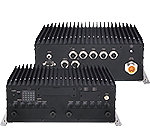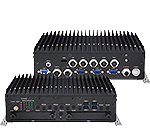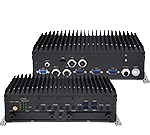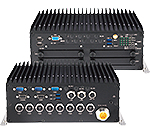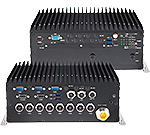Faster and faster we go!
For some time now, even with budget airfares being a popular option, many travelers still view trains and buses as the most cost-effective and scenic transportation method between European city centers. However, other passenger needs have increased in tandem with the breakneck development of network technology, meaning that transportation solution providers have had to quickly step up their game and keep up with current trends.
First and foremost, customers want the fastest Wi-Fi connection speeds possible, which is why 5G is currently in such high demand. Transportation providers have consequently felt the pressure to satisfy customer needs with connections that are faster, smoother, and more secure than other competitors’, all in the name of providing the best customer service possible. And as passengers travel to other countries and regions, they may not have local cellular access, so providing Wi-Fi service is ever more crucial. They may even desire media content to keep them occupied on long-distance journeys – which ultimately increases their overall satisfaction.

Figure 1. nROK 7251 as a comprehensive system.
The task: modernize antiquated transportation computers
NEXCOM was recently tasked with assisting a transportation system integrator in Europe who was searching for the perfect solution to update their client’s outdated computing systems.
This solution needed to meet several requirements:
- Suitable platform for both trains and buses
- 5G communication-enabled (WWAN/Wi-Fi): to take advantage of upcoming 5G network deployments and provide passengers with Wi-Fi access, but also to employ extra concurrent bandwidth with multi WWAN modules and multi SIMs for better resource management
- High-performance computing (media resources and storage) to access information easily and quickly, so as to provide passengers infotainment such as live TV and online media streaming, as well as to remotely manage content and perform user behavior analysis
- CCTV connectivity: to ensure safety aboard public transportation
- Data security: to provide a hardware mechanism for securing operator applications and data, as well as to prevent unauthorized access
NEXCOM’s 7251 is the one
The answer was clear: NEXCOM’s nROK/VTC 7251, an onboard high mixed multimedia and surveillance platform equipped for both trains (nROK) and buses (VTC). The 7251 was especially built for communication and media server purposes, with five WWAN-ready expansion ports, and onboard surveillance, with four PoE ports available for video camera use. What’s more, the ruggedized platform’s isolation kit protected the 7251 from potential power surges. NEXCOM additionally included proprietary software for added security and ease of use.
Communication-ready
For WWAN access, the end client deployed four expansion ports with LTE/5G modems, each with its own pair of SIM cards. Having multiple WWAN modules supplied extra bandwidth and network redundancy, meaning that the end client could effortlessly switch between networks when one network was down or provided better latency. Passengers were thus able to enjoy stable Wi-Fi access throughout their journeys. If the client decides to upgrade their LTE modems to 5G speeds, passengers will then be able to enjoy even faster connection speeds!
Media server functionality
In terms of multimedia entertainment, passengers benefitted tremendously from network connectivity: they were able to view infotainment and watch live television on seatback screens and handheld devices. The operator could even remotely manage content from the cloud and perform back-end big data analysis on customer preferences, allowing them to refresh and push more relevant content. Moreover, two SATA SSDs were also accessible for media storage.
Equipped for video monitoring
Just as with all modes of transportation, safety was a primary concern for the end client. As a PoE railway/bus computer, the nROK/VTC 7251 was able to monitor onboard conditions through CCTV. Four independent PoE ports powered the onboard camera system, providing durability and high speeds. Since surveillance cameras record greater data volume, we included the aforementioned SSDs, with additional BIOS option to utilize mPCIe expansion slots as mSATA storage.
Durable design
Utilizing the optional wide input voltage of 24 to 110 VDC with isolation also ensured that the computer and cameras would be protected from damage during power surges. The nROK/VTC 7251 was also ruggedized and suitable for suboptimal environments with an extended operating temperature range of -40 to 70°C and certification to both EN50155 and MIL-STD-810G standards.
Bonus: NEXCOM software included
To protect the system from malware and preserve hardware and software intellectual property rights, NEXCOM programmed the system’s hard drives to only be accessible through BIOS password and secure boot and inoperable with any other platforms. Configuration was simple with the enclosed utility software for both Linux and Windows operating systems, allowing the client seamless management of the 7251 platform.
But that’s not all!
The nROK/VTC 7251 was a first-rate choice for the client, providing speed, connectivity, and safety with its communication, multimedia, and surveillance features – all in a ruggedized platform. But NEXCOM is constantly and consistently responding to client needs by developing new solutions, such as the nROK/VTC 7252, which provides even more storage, PoE ports, video output, and protection.
|
nROK 7251 Series
|
||||||
|
||||||
|
nROK 7252 Series
|
||||||
|

